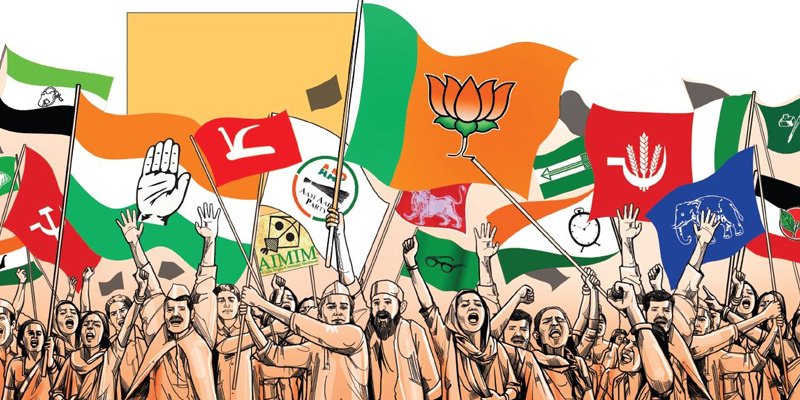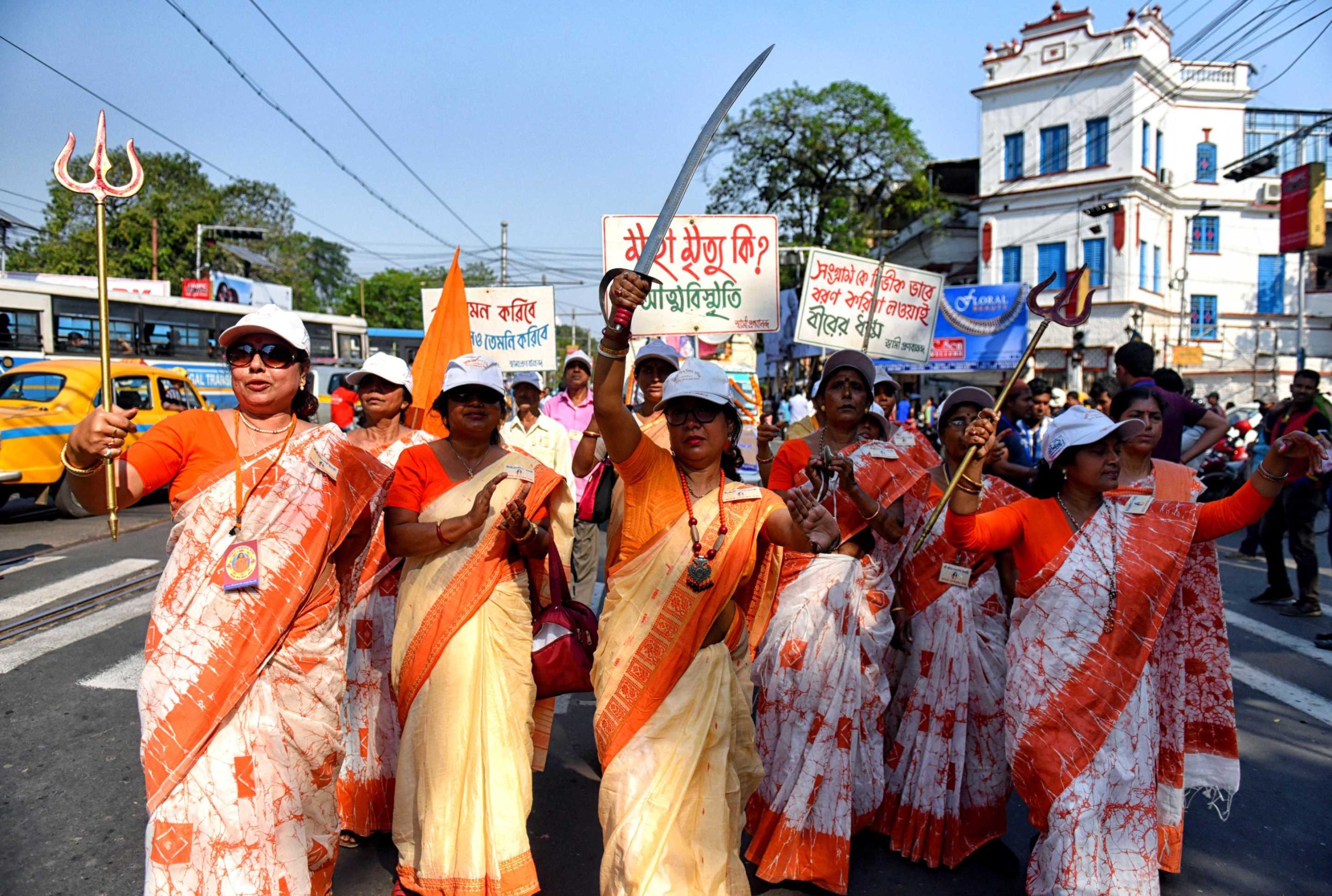Women have for generations been used as convenient props in the game of politics. From wives dreamily looking up at their husbands’ faces as they proudly take oaths and daughters who have cheered from front seats at
What is traditionally looked down upon as being ‘feminine’ and thus weaker or inferior, is cunningly used during important times to make the male in the picture look
A few recent instances, including a fine, short piece by Malayali feminist, historian, and social critic J Devika highlight this point further. J Devika wrote in the piece on the ‘Women’s Wall’ of Kerala, which was pushed by the CPI(M) as a revolutionary counter to a right-wing surge in the state. She compared the women being used as propaganda tools to women who are survivors of abuse – female bodies that get used to prop up noble male ideologies and empty ‘revolutions’ in
women have always been systematically, smartly and strategically used to bolster the political standing of men in their lives.
The Aam Aadmi Party touted women’s concerns all around when rising to prominence over 5 years ago. It also was the harbour of misogynists and racists like Somnath Bharti, whose shameful actions the party’s leaders refused to categorically condemn. An early AAP political ad spot-lit party founder Arvind Kejriwal as a wunderkind and supplemented it with images of women cooking and doing other domestic chores.
Indian PM Narendra Modi is in a class of his own when it comes to using faux feminism to bolster his own image. He uses the patent mix of benevolent sexism and ‘traditional family values’ of every right-wing party on Earth to talk about “protecting our daughters” and “
Also read: Amma, Behenji, And Didi: Desexualising Women Politicians
From Canada’s Justin Trudeau to Saudi Arabia’s Mohammad bin Salman (MbS), politicians and royal leaders cunningly create spectacles of women’s empowerment to make themselves look like forward-thinkers. In Trudeau’s Canada, the femicide of indigenous women has continued unabated and female leaders from his own party have been booted out by him for questioning his alleged corruption. MbS took home all the credit for ‘allowing’ women to drive on Saudi streets, even as the country hunted down women’s rights activists, jailed and brutally tortured and sexually assaulted them.
The Women’s Shield
The sight of women on the political stage is a powerful visual. But in most instances, women are not occupying the centre stage, they are being treated as the scaffolding that supports a men-focused agenda’s rise. These women are used to make the men look kind, family-oriented, romantic, feminist, fun, and as everyday fellas. These women are used as the ground staff which will make the calls, gather people, watch the kids, cook the food, brew a million cups of tea, and pull in more such women into the fold. Their immense talents for community mobilisation, domestic support, and compassionate leadership will be smartly used to promote a patriarchal agenda that will ultimately subjugate them.
There are indeed a few women who are truly calling the shots in politics. There are also many women who are complicit in spreading bigoted political agendas.
This policy of using women also shields problematic men. How can he not be a feminist if his wife is standing there with him? How can he be an abuser if he has handed two election tickets to women? How can he be sexist when he bows down to a Goddess? As J Devika states, it is a position of abuse that doesn’t seem like abuse.
The women’s work that, often literally, feeds a political campaign is always tagged as auxiliary work. These political structures want secretaries, cooks, organisers, assistants, and cheerleaders. In themselves, all these roles are un-problematic. But in the hands of patriarchal systems, they are doubly evil – they look women-friendly simply by including women in photo ops to fool the masses, while simultaneously working to derail women’s rise in society.
There are indeed a few women who are truly calling the shots in politics. There are also many women who are complicit in spreading bigoted political agendas. This piece’s aim is not to absolve any woman of their own dangerous political affiliations. It is, in fact, to question the systems that use women’s faces, words and labour to get ahead but which also remain misogynistic at their core.
Also read: Why Do Politicians Get Away With Sexist And Misogynist ‘Rants’?
Which is why, just the sight of a woman, or a row of women, on the political stage is not enough. We need to look closely at where they are standing. We need to fight back against empty posturing and demand real policies and better implementation of women’s welfare schemes. We need to dig deeper and check if these policies are truly addressing caste, class, ableism, and LGBTQIA+ related concerns or not. Only then can we applaud true representation.
Featured Image Source: The Norwich Radical
About the author(s)
Shruti Sharada is a freelance writer, editor, communications strategist, podcast host and queer feminist based in Bengaluru.




